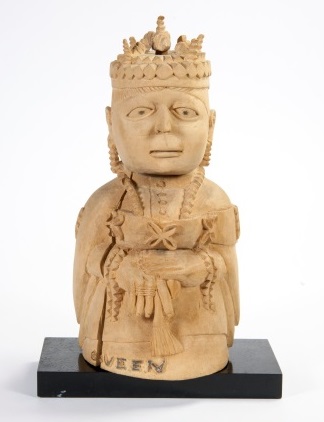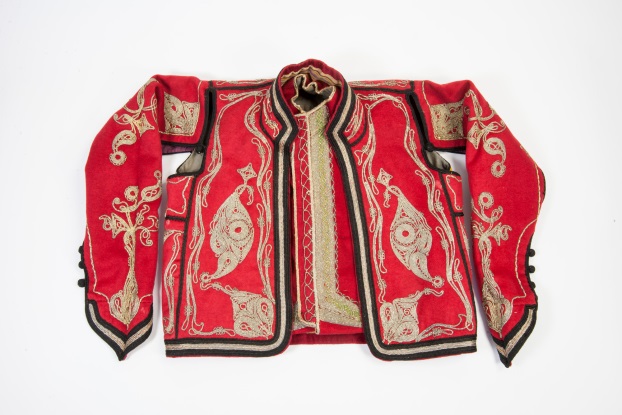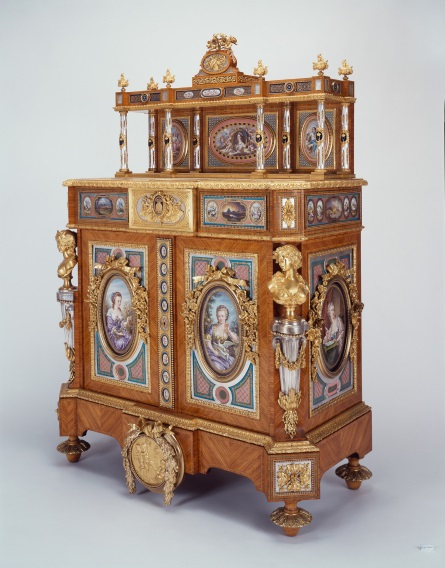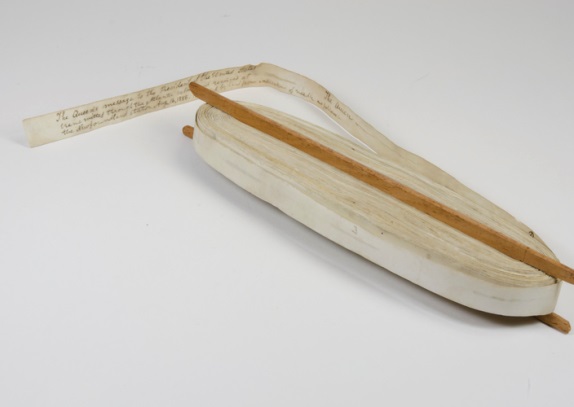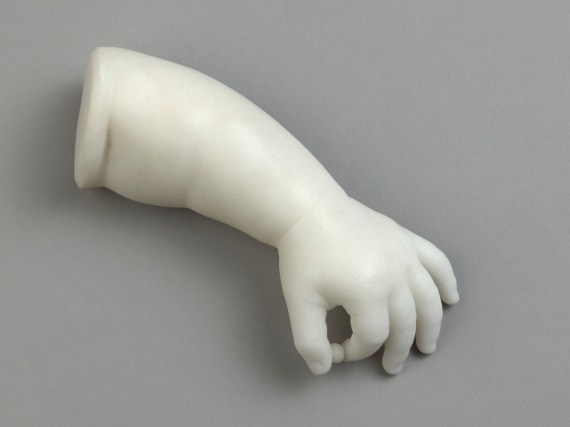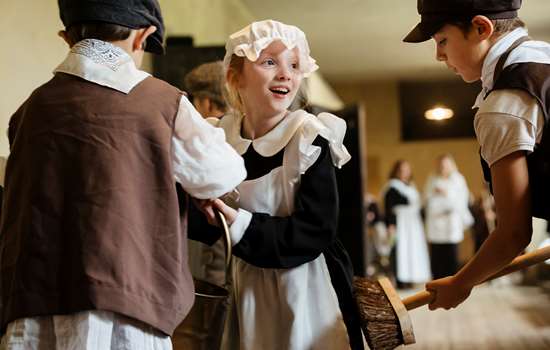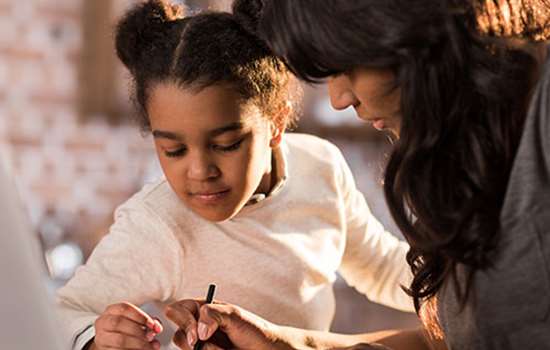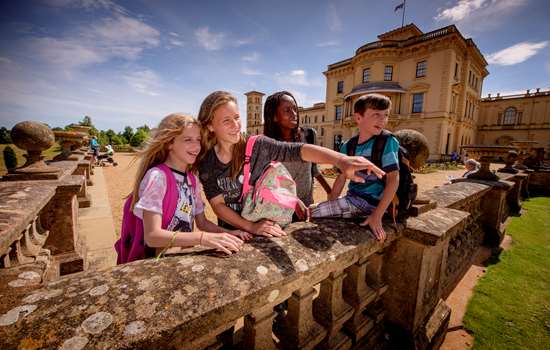Meet our Expert
I'm the Curator at Osborne, Queen Victoria and Prince Albert's seaside home on the Isle of Wight. I've been the curator of the collections at Osborne for over 20 years.
My favourite object at Osborne is Queen Victoria's bed. It's large and beautifully constructed, dominating her bedroom. The large bronze plaque above the bed was designed by her daughter-in-law Alexandra, who became the next queen. It's decorated with angels and images of some of the royal residences and demonstrates the respect and affection Victoria's family had for her.
At Osborne, we aim to present the house as it was when Queen Victoria died in 1901. Although Osborne's royal connections make it a very special place, it was built for Queen Victoria and Prince Albert as a private family home. The house wasn't lived in by previous or succeeding generations of the family so it's still filled with objects that Victoria and Albert purchased themselves. The house and the collections within it provide a microcosm of the Victorian era.
- Michael Hunter, Curator at Osborne
Yoruba Carving of Queen Victoria
Date: c.1897
Description: Some objects at Osborne can tell us a lot about the British Empire. During Queen Victoria's reign (1837–1901), the empire grew, becoming more dominant, wealthy, and powerful as the 19th century went on. The British presence in Africa was one legacy of transatlantic slavery. In 1807, the ‘trade’ in enslaved Africans was abolished in law, but the enforced labour of enslaved Africans continued legally until 1834 when slavery was abolished in British colonies. This portrait bust of Queen Victoria was made at a time when Britain ruled over large areas of Africa and was competing with other European powers for land and the natural resources to help fuel its economic growth. The violent conquest of indigenous African lands by Europeans is sometimes referred to as the 'Scramble for Africa'. By 1900, Europeans ruled more than 90% of the continent.
This portrait bust is made of a light-coloured soft wood and is about 31cm tall. The enlarged head and youthful face on this bust is typical of Yoruba carving and is intended to indicate the serenity and wisdom of the person being portrayed. The Yoruba are an ethnic group concentrated around present-day Nigeria and Benin. The bust was bought for Queen Victoria by Colonel Henry McCullum (1852–1919), Governor of the British Lagos Colony (a region in the southern part of Nigeria). We know that McCullum bought the bust from the artist and sent it to the queen as a gift in 1897. He says in a letter to the head of the queen's personal household that:
'I was much struck with one of the outcomes of the jubilee durbar held here last June....I purchased one of these figures and send it to you as it may amuse Her Majesty.'
From this account, and the fact that the bust shows only a 3/4 depiction of the queen, we can infer that its design was inspired by commemorative images widely circulated across the British sphere of influence in Western Africa for Victoria's Golden Jubilee. These photographs were displayed in British administrators' offices and given as gifts to local rulers. During the late-19th century, Queen Victoria was a source of fascination for some Africans who depicted her in their artworks as a mother figure, and referred to her as ‘We Mammy’ (our mother), with a certain amount of affection and reverence. She was seen as a figure above the authority of local colonial officials that could be petitioned to intervene in local tensions.
Like many objects gifted to Queen Victoria and her family, the bust was displayed in the Swiss Cottage Museum as an exotic curiosity during the late-19th and early-20th centuries. In the 1904 inventory of the museum it was described as a ‘crude native bust’, which reflects the belief at this time that non-European art was simplistic and primitive. Today we view this piece as a masterful command of an intricate and sophisticated style. There's a similar example housed in the Pitt Rivers Museum in Oxford that you can explore through their online catalogue to find out more.
Further Learning Idea: Find out more about traditional art styles from across Africa and how they're achieved. Choose one to inspire your own portrait. You could use paint, sculpture, textiles and more to create your artwork.
Bulgarian Child's Costume
Date: c.1870
Description: The collection in the Swiss Cottage Museum includes objects from across the world and many of them give us insights into important international events during the 19th century. This example of a Bulgarian child's costume has elaborate gold braiding on the jacket and waistcoat, as well as white pantaloons, red gaiters, a silk sash and cap.
The costume, along with another blue one, belonged to Johans and Georgio Feribrond. They were orphans whose parents had been killed fleeing from Turkish forces during the Crimean War (1853–56). The boys were saved by a ship's captain, Captain Speedy, and brought to Britain in August 1854. To start with, they were looked after by Captain Speedy at his home in Freshwater on the Isle of Wight. On hearing the Feribronds' story, Queen Victoria took the brothers under her protection, arranging for them to be fostered by Mr and Mrs Jackman who were tenants on the Osborne estate. In March 1855, Victoria described in her journal how she 'walked over to Mrs Jackman's Cottage & sketched the dear little Bulgarians. Johnny is a dear, funny boy, & very good'.
Further Learning Idea: Research the Crimean War to find out more about the conflict and the experience of those caught up in the war. Write a newspaper report giving people in Britain an idea of what was going on in Bulgaria, where the Feribrond brothers were from.
French Porcelain-Mounted Cabinet
Date: 1854–55
Description: The collection at Osborne tells us a lot about the personal tastes of Queen Victoria and Prince Albert. Victoria ordered this cabinet, made by Edouard Kreisser (active 1843–63), at the Exposition Universelle in Paris in 1855. This was an international exhibition of industry, agriculture and art. The queen visited the exhibition as part of a very successful state visit to Emperor Napoleon III of France and his wife, Empress Eugenie. Victoria also purchased a matching table by Kreisser during this visit which she gave to Prince Albert as a Christmas present (and is now in the Victoria and Albert Museum).
Queen Victoria gave this 'beautiful French cabinet, inlaid with plaques of china' (Queen Victoria's Journal, 16 August 1856) to Albert on his 37th birthday, celebrated at Osborne a year after the exhibition. Both pieces were originally placed in the Audience Room at Osborne, where this cabinet can still be seen. It is the most elaborate example of Queen Victoria's taste for porcelain-mounted furniture.
Further Learning Idea: Queen Victoria and Prince Albert were very particular about the gifts they gave each other on special occasions, like birthdays. Choose someone special to you to commission a birthday present for and write a detailed set of instructions for a designer to follow. You could test your instructions by giving them to someone else to follow.
Tickertape Recording
Date: 1858
Description: Queen Victoria and Prince Albert were interested in modern technology and innovations, and we can see this in some of the features and collections at Osborne, like the house’s central heating system and the installation of telephones on the estate in 1878.
On 16 August 1858, Queen Victoria sent a message to the President of the United States, James Buchanan, transmitted by submarine cable from Ireland to New Foundland, Canada. This is the original tickertape recording of this first ever official transatlantic cable message. It's ink on paper and measures 6.5cm x 31cm x 3.5cm.
The text on the tickertape reads:
'The Queen desires to congratulate the President upon the successful completion of this great international work, in which the Queen has taken the deepest interest. The Queen is convinced that the President will join her in fervently hoping that the electric cable, which now connects Britain with the United States, will prove an additional link between the nations, whose friendship is founded upon their common interest and reciprocal esteem. The Queen has much pleasure in this communication with the President, and renewing to him her wishes for the prosperity of the United States.'
Further Learning Idea: Learn more about how the transatlantic cable worked and practice sending your own messages to a partner using Morse code, which was developed in the 1830s. You could draft a message imagining that you're Queen Victoria sending a cable to an important person, like the President of the United States.
Left Arm and Hand of Princess Louise
Date: 1848
Description: The royal children spent many happy times at Osborne and we can still see objects relating to their childhoods on the estate today. One of the more unusual ways that Queen Victoria kept souvenirs of her children’s childhood was by commissioning marble copies of their forearms and feet. This example is the forearm of her sixth child and fourth daughter, Princess Louise (1848–1939).
The sculptor, Mary Thornycroft, worked for Queen Victoria and Prince Albert for many years and excelled in her depictions of the couple's nine children. Each carving was based on a plaster cast made from moulds taken while the child was asleep. There's an inscription on this example that tells us Princess Louise was only 3 months old when the plaster cast for the sculpture was made.
Louise was the most artistic of Queen Victoria's children and Mary Thornycroft taught her modelling and sculpture. She also attended the National Art Training School (later the Royal College of Art) and became an accomplished artist. Louise's life-size sculpture of her mother in her coronation robes remains outside Kensington Palace today.
Further Learning Idea: Practice your sculpting skills by using clay, soap, playdough or similar to create an artwork that represents your own childhood. Think about how you would depict activities, memories, or people in sculpture, just like Mary Thornycroft and Princess Louise.

